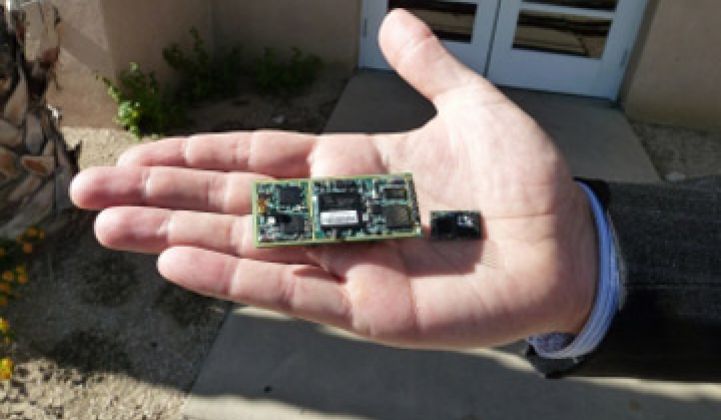On-Ramp Wireless is using its long-range wireless technology to act like the eyes and ears of the grid.
The company this week formally introduced the Remote Monitoring Unit (RMU), a device that can monitor the activity of power lines and grid assets with On-Ramp’s Ultra Link Processing communication chips. ULP signals have a five-mile range, do not get obstructed by steel or concrete (the company put one under a manhole cover and could still maintain signal connections for two miles). While that's good enough for meters, the bandwidth is large enough for remote monitoring or demand response services.
The first application for the RMU will be to monitor the health and activity of safety lights. If the LED light on top of the oil refinery begins to flicker, the RMU senses it and sends a signal to get a repair before a plane crashes into the side of the building. More applications are on the way.
The company told us a bit about its plans earlier this year at DistribuTECH. Schweitzer, the electrical equipment maker, has already began to integrate On-Ramp's technology into some of its voltage sensors. On-Ramp's technology can also now be seen in in gas meters.
This summer, the company will also come out with a new version of ULP for meters that will cost one-third as much as its current chipset and consume half the power. (The photo shows the old chipset and the new, smaller chipset. The hand model is CEO Joaquin Silva. Silva will speak more on the subject at our Networked Grid conference May 3 and 4 in San Francisco.)
On-Ramp’s selling point, again, is long range with high bandwidth. In a demonstration, it set up four collectors in San Diego that provide fairly broad coverage over a 1,200-square-mile area. Thirty access points could cover the entire 4,000 square miles of San Diego County, claims vice president of strategic marketing Jonas Olsen. The company grew out of the cellular and wireless know-how of the San Diego region.
Compare that to mesh: it would take thousands of collectors to do the same job, he asserted.
“We are getting a lot of interest from European water and gas. Their number one complaint with mesh is the unpredictability of network planning,” Olsen said.



